This post may contain links to products that we use and love, and we may earn a commission at no cost to you.
While paging through an Oregon State Parks guide, I noticed a listing for a state park less than an hour from home, Thompson’s Mill State Heritage Site. What is this?! I thought we’d been to all the state parks nearby. The guide said it was a flour mill that started in 1848. Of course, we had to go!
In short, Thompson’s Mill may be the coolest state park you’ve never heard of.
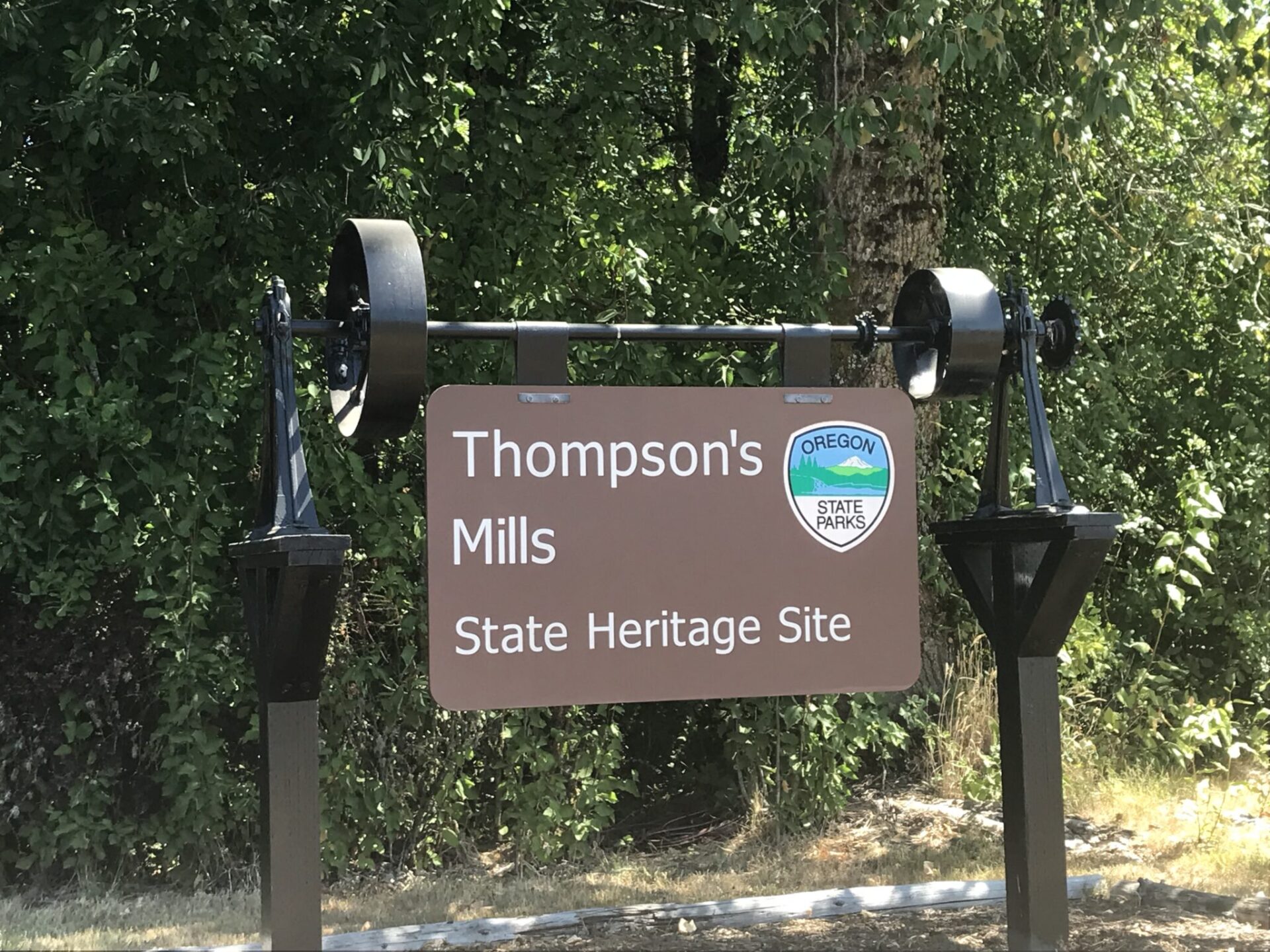
Arriving at Thompson’s Mill
We packed a picnic lunch and drove 45 minutes from Springfield, Oregon, to Thompson’s Mill, near Shedd, Oregon. We followed Hwy 99E for a charming view of the countryside and a quick stop in Halsey to admire an old wooden grain elevator.
Arriving at Thompson’s Mill, we found the cleanest vault toilets I’ve ever had the pleasure of using. They even have murals painted on the walls inside. Picnic tables line the mill race and the parking lot.

Picnic tables line the mill race in front of the flour mill.
After lunch, we headed to the main building. The website promises tours throughout the day, and we were ready to learn how flour mills operated over 100 years ago. On our first trip, we took six children, ages 0 to 13.

Shannon and our kids walk into the flour mill on our first trip. We didn’t know what to expect, but it turned out to be a wonderful museum for kids.
Docents met us at the entrance, welcoming us with smiles and greeting the kids warmly. Inside, the flour mill is very child-friendly, with clear signs indicating what can be touched. And you can touch lots of things! It’s a very interactive museum and kept our kids enthralled. The docents are wonderful storytellers and bring the mill’s history alive.
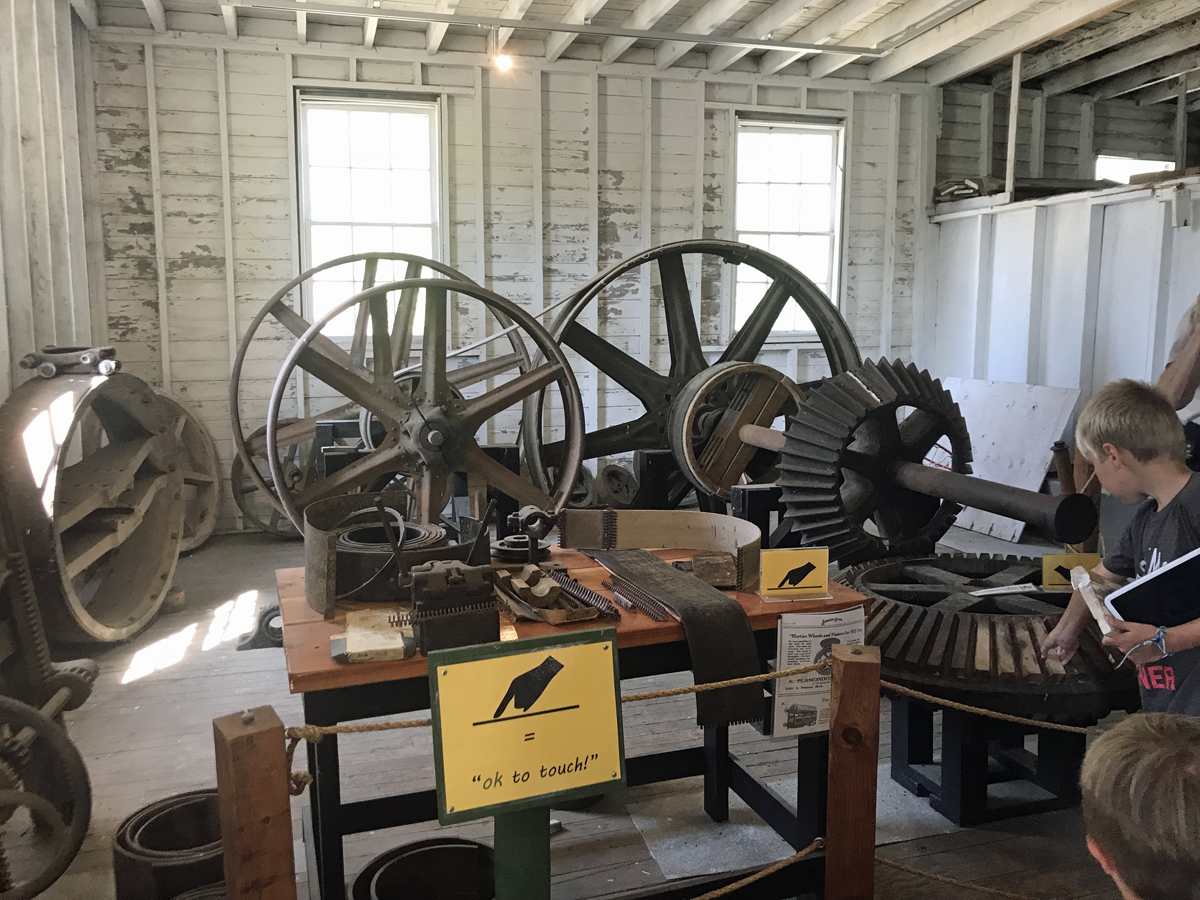
A lot of the exhibits have signs that say, “Please touch!” Almost everything is original to the mill at some point during its 100+ year history.
Interactive Exhibits at Thompson’s Mill

When Oregon State Parks purchased the mill, they scoured the property to find artifacts, including the original mill stones from 1858! They were broken and had been reused to hold up a support beam in the barn!
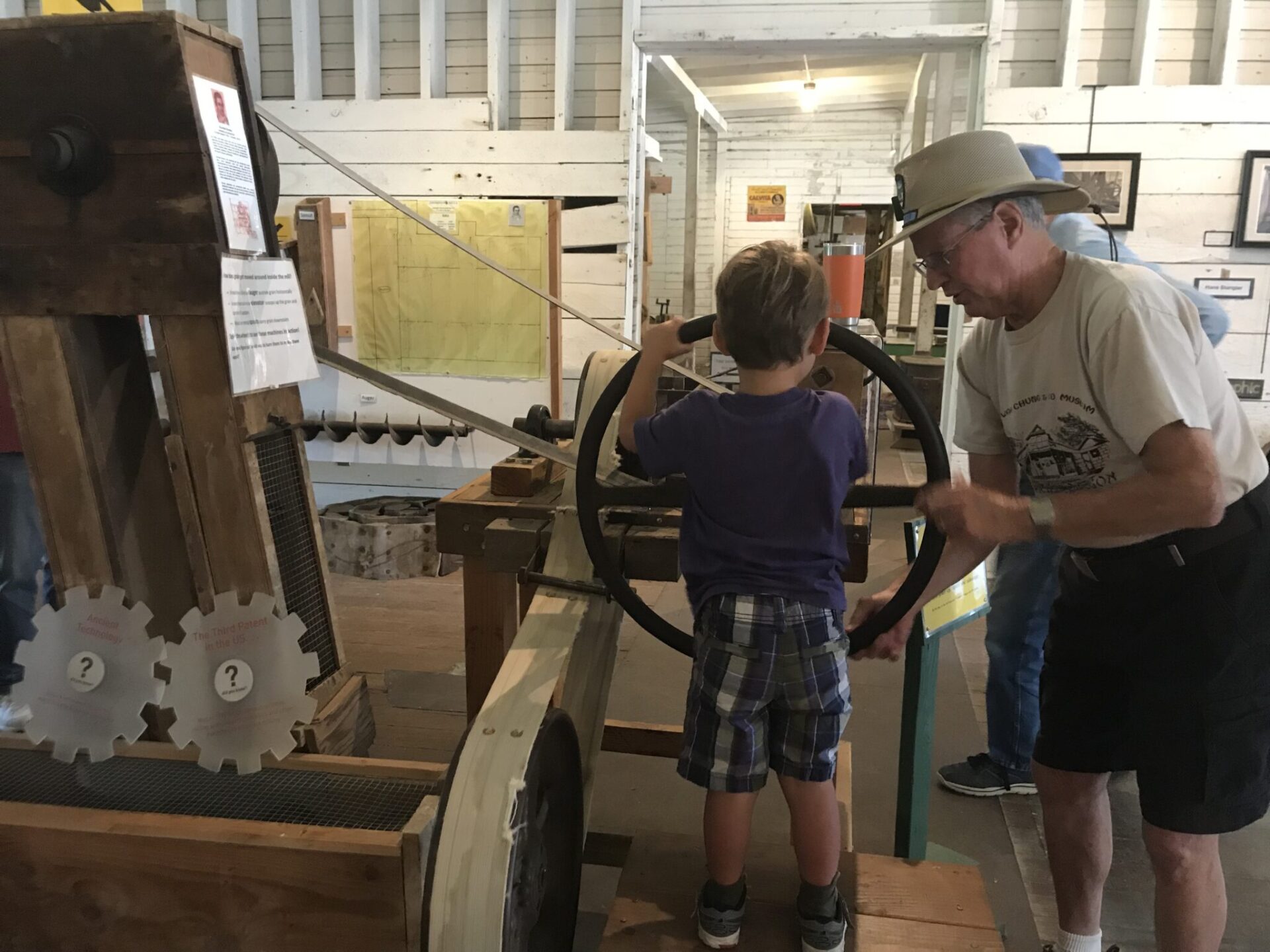
A museum volunteer helps my son turn the auger. This machine demonstrates how augers move grain through the mill.

Another docent shows my kids how milling flour works on a manual mill stone. The big mill stone grinds the wheat, breaking the hard outer layer (or bran) off of the wheat kernel (the germ and endosperm).

Next, she shows the kids how to use sifters to separate the ground wheat. The top tray holds the germ, the middle tray holds the kernels, and the bottom tray catches the fine, soft flour.
Historical exhibits inside the mill
The museum contains all aspects of a historic flour mill, including sewing machines for making flour sacks, and a brief history of printed flour sacks.
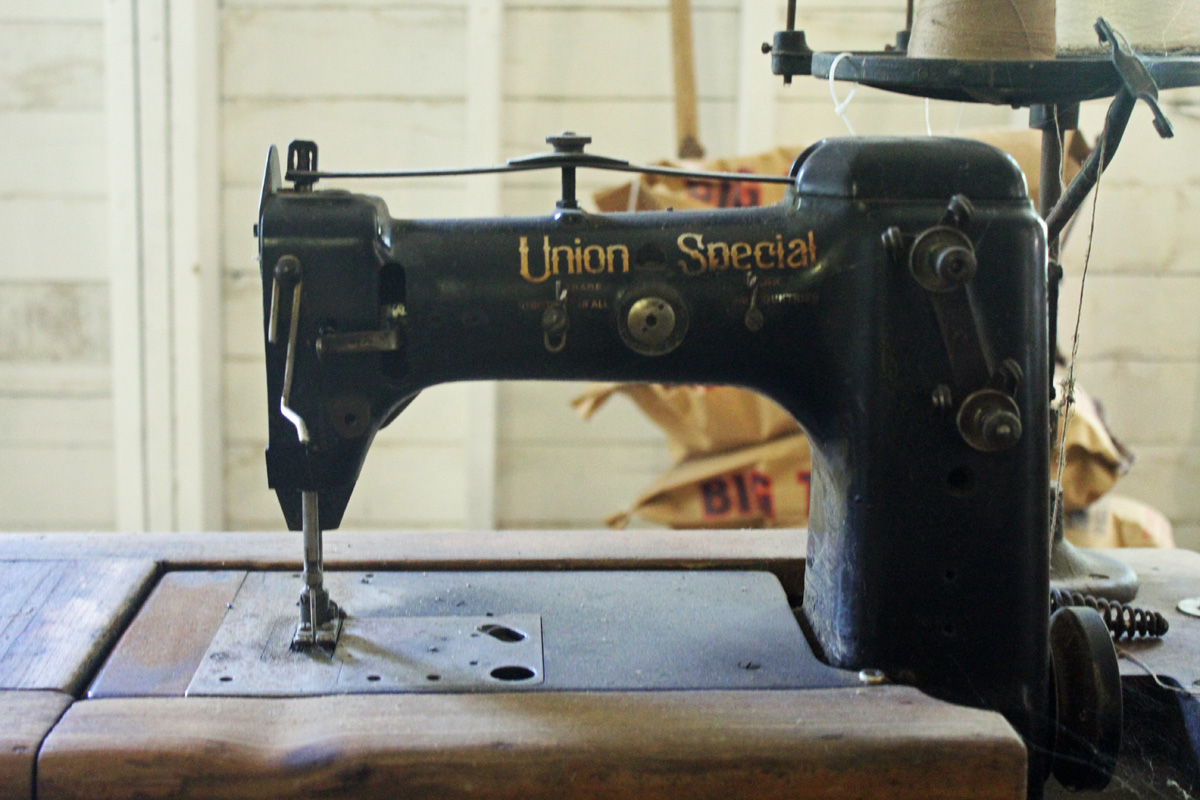
The mill includes a sewing room where all of the mill’s flour sacks were made.
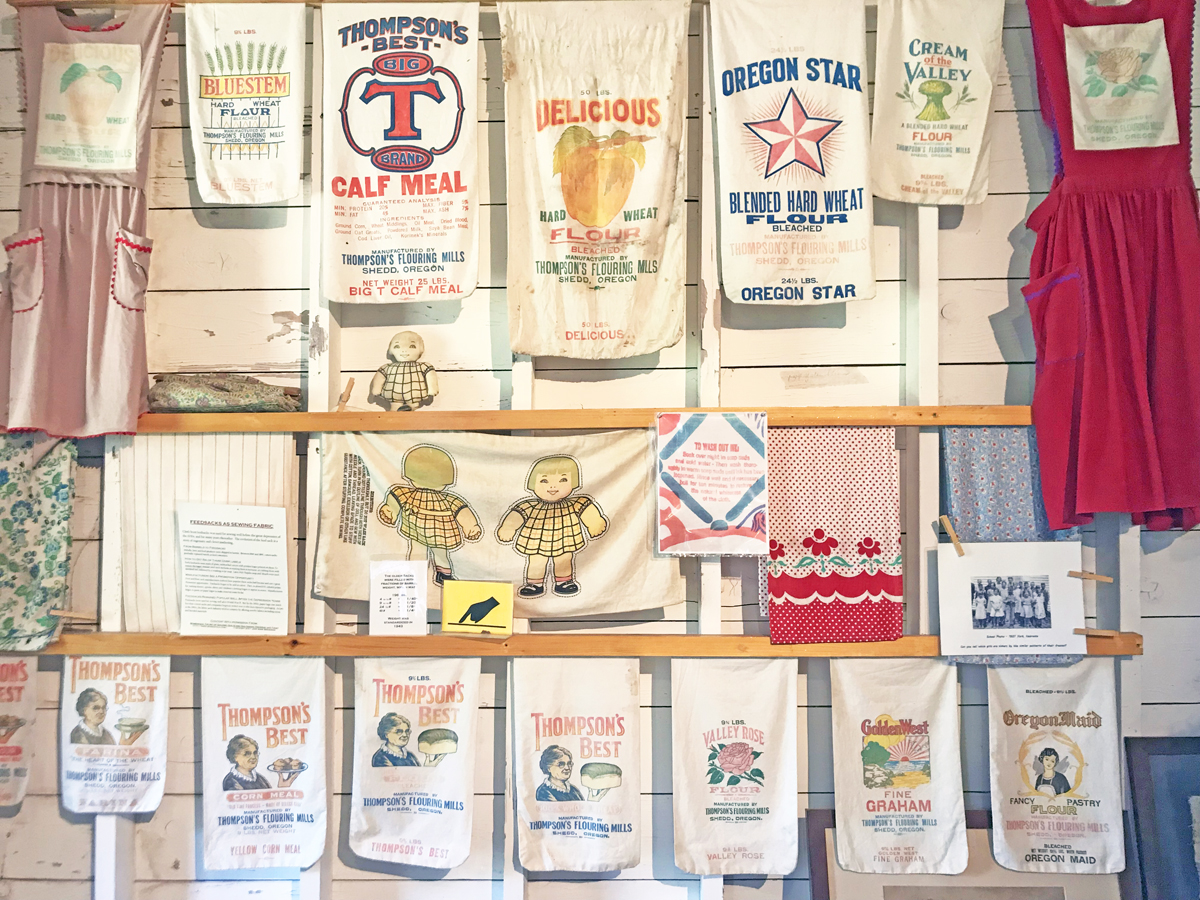
Examples of Thompson’s Mill cotton flour sacks through the years, before paper sacks were common.

Many of the flour mills at the time had their own prints and designs that identified their brand.
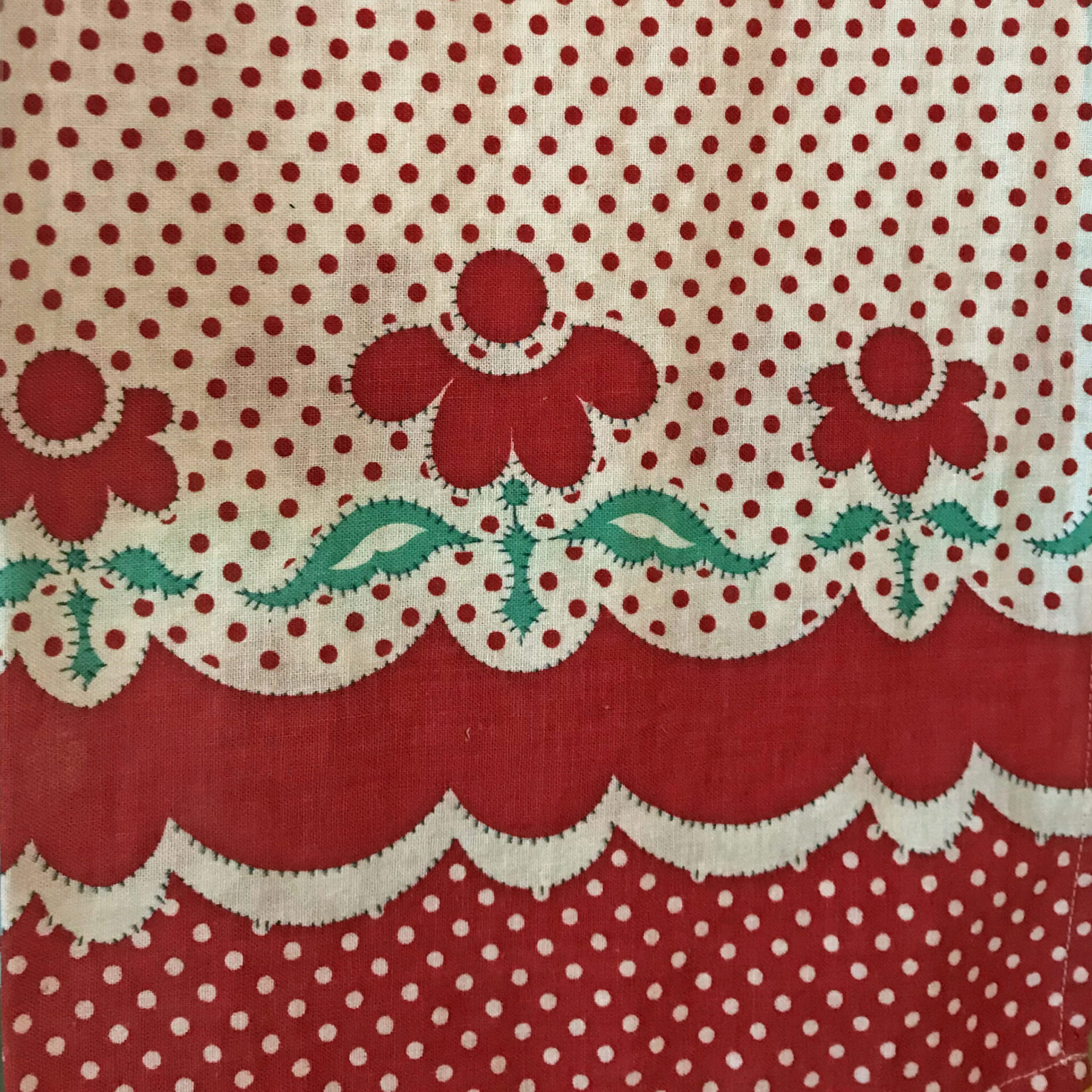
This red sack caught my eye. I’m sure it caught the eye of women in the 1920s, too! Wouldn’t a little girl be adorable in a flour sack dress from this print?

The delicate blue flowers on this print would make a lovely apron or skirt.
The Turbines
The tour headed outside and down the stairs. Till this point, everything is wheelchair- and stroller-accessible. Unfortunately, there is no wheelchair access to the basement. However, there’s plenty of action above the basement to keep visitors engaged and entertained even if they can’t navigate down the stairs.
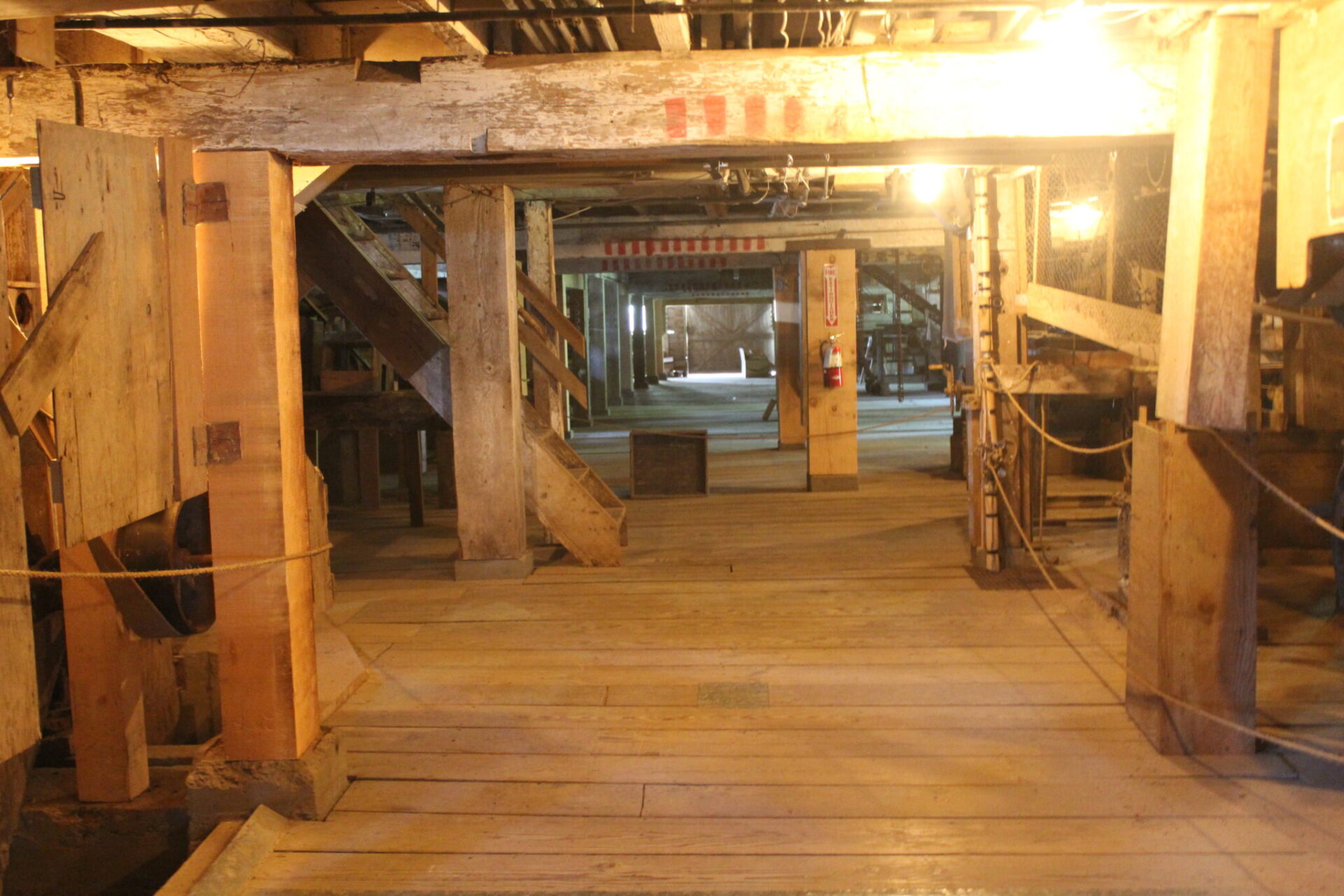
The mill’s basement is wide open now, but it’s easy to imagine a day when this was full of storage, equipment, and people working.

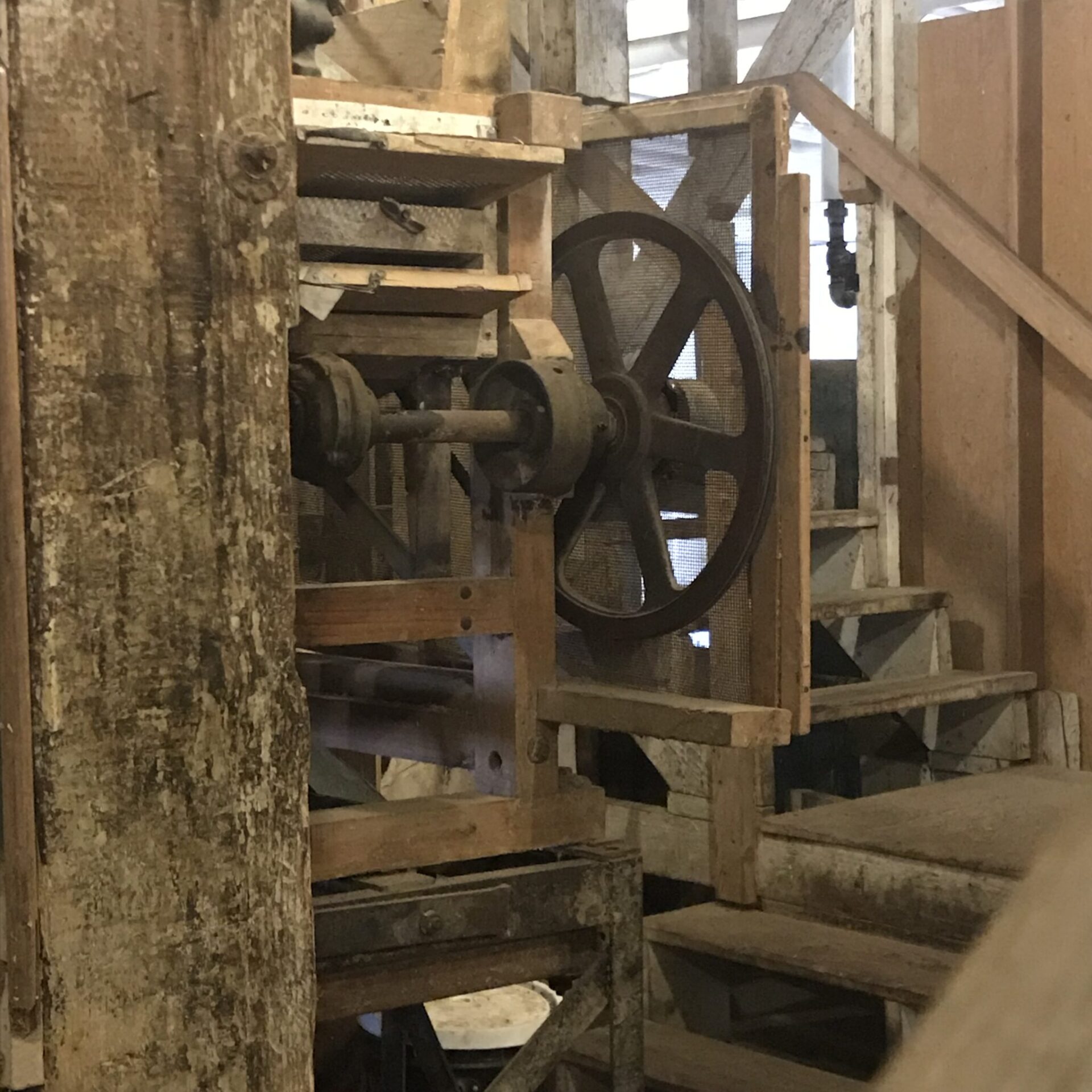
The star of the show is the turbines that still work! The docent will turn them on while you watch. The wheels slowly begin to turn.

The noise rumbles at first, then louder and louder as the wheels turn faster. Slowly, the giant turbines begin to turn.

I made a video that best demonstrates this action.
History of Thompson’s Flouring Mill
In 1858, a new flouring mill opened named Boston Mill, and in 1861 the town of Boston, Oregon, was platted right next door.
The community of Boston drifted west after the railroad was built a couple of miles away in 1871. This became the new town of Shedd. The mill benefitted from the railroad and flour from the newly renamed Thompson’s Mill was soon shipped all over the world, including China and Belgium.
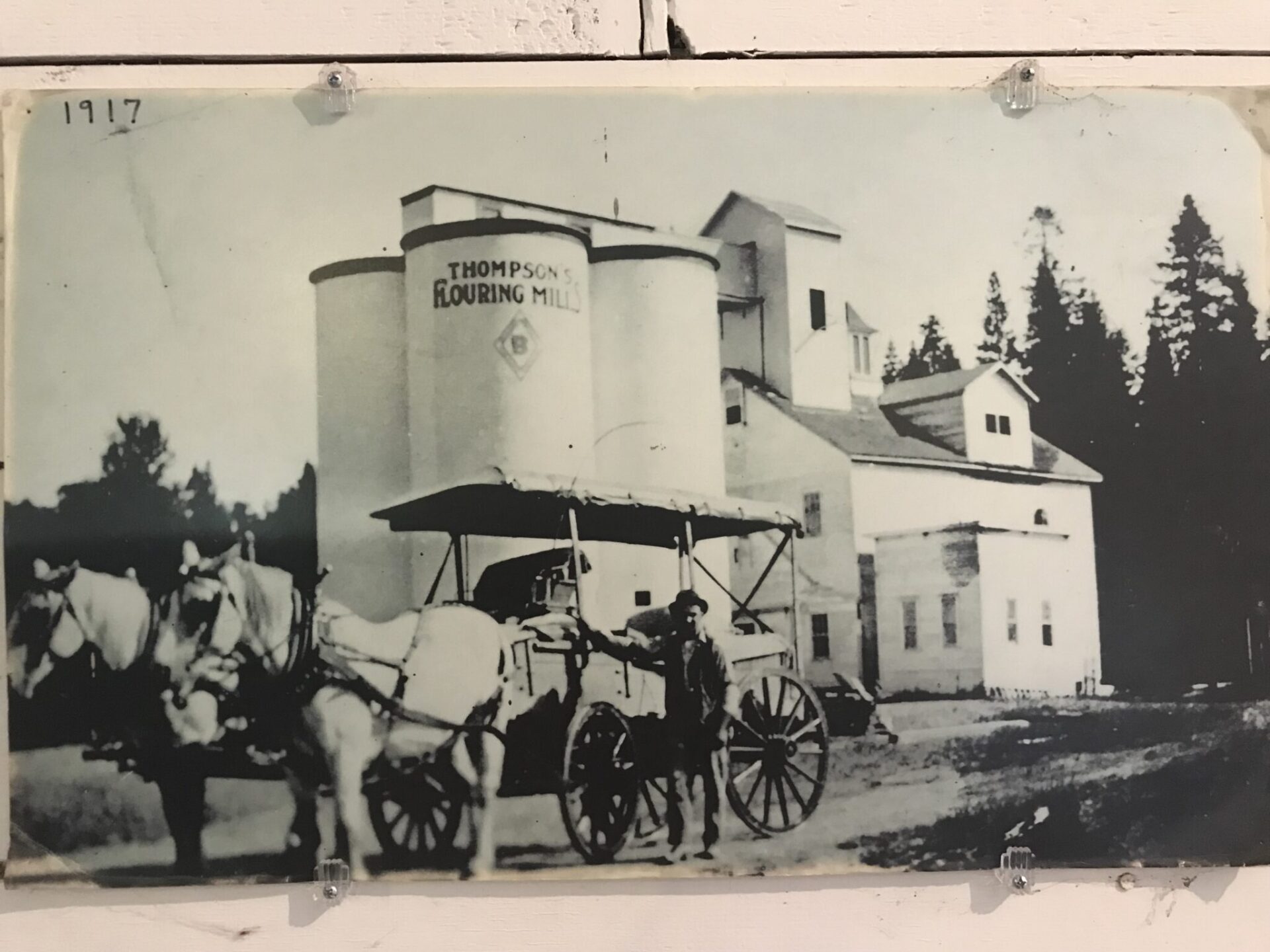
This 1917 photo of Thompson’s Flouring Mill hangs inside the mill today. It’s easy to imagine farmers pulling up with their wagons to unload wheat or load bags of fresh flour. (Courtesy Oregon Parks and Recreation Dept.)
By 1940, the flour markets were changing, and the mill had to change, too. Thompson’s Mill was nearly 80 years old and larger mills were producing flour commercially. Paper flour sacks became commonplace, and the whimsical designs of cotton flour sacks were no longer needed for clothing. People bought bread ready-made and the need for fresh, local flour declined. Thompson’s Mill switched from flour production to animal feed.
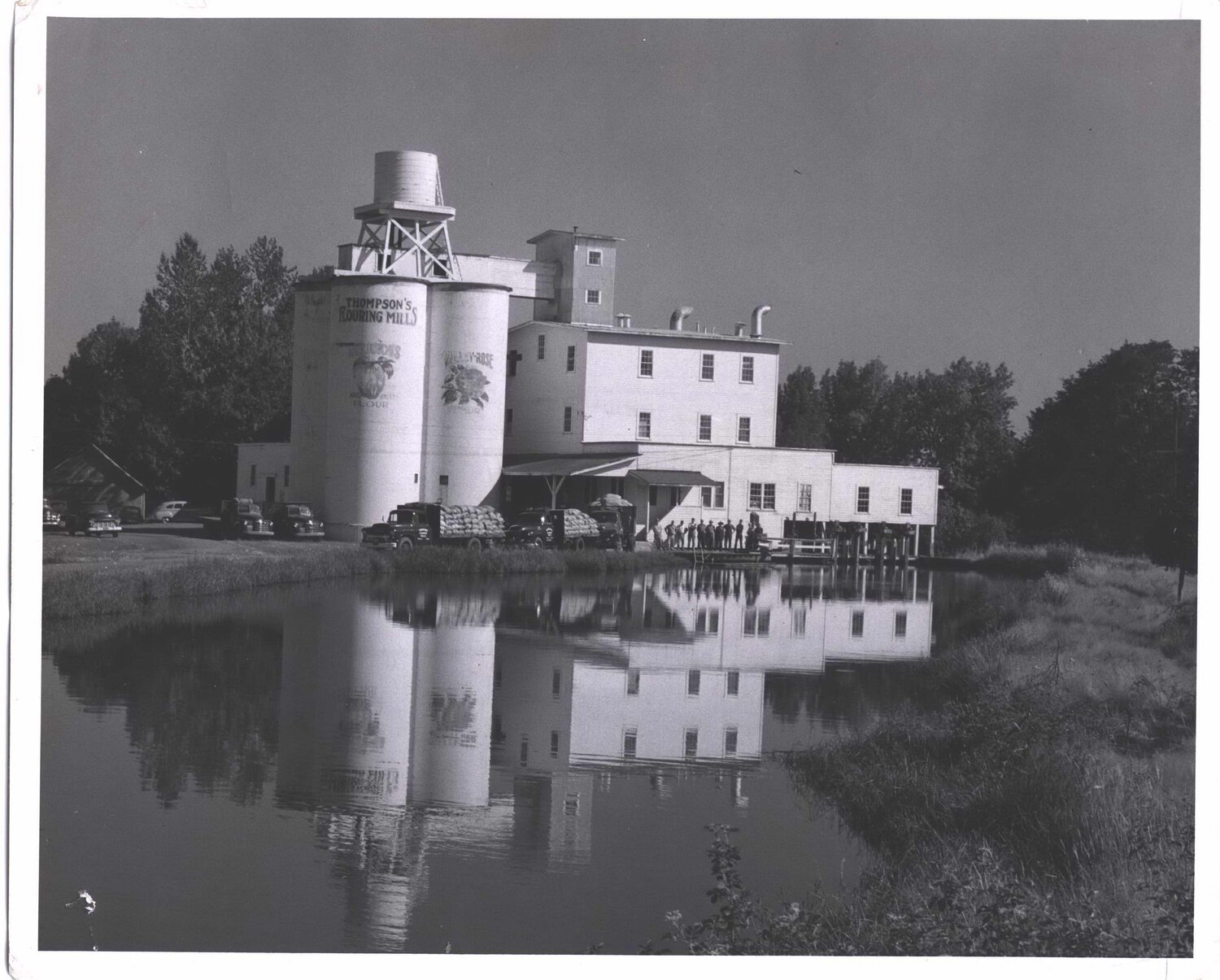
Dated 1939, this photo depicts trucks and people lined up in front of Thompson’s Flouring Mill. Just a year later, the mill switched from producing flour to making animal feed. (Thompson’s Flouring Mill. Photo courtesy Museum collection id: 2002.125.0003)
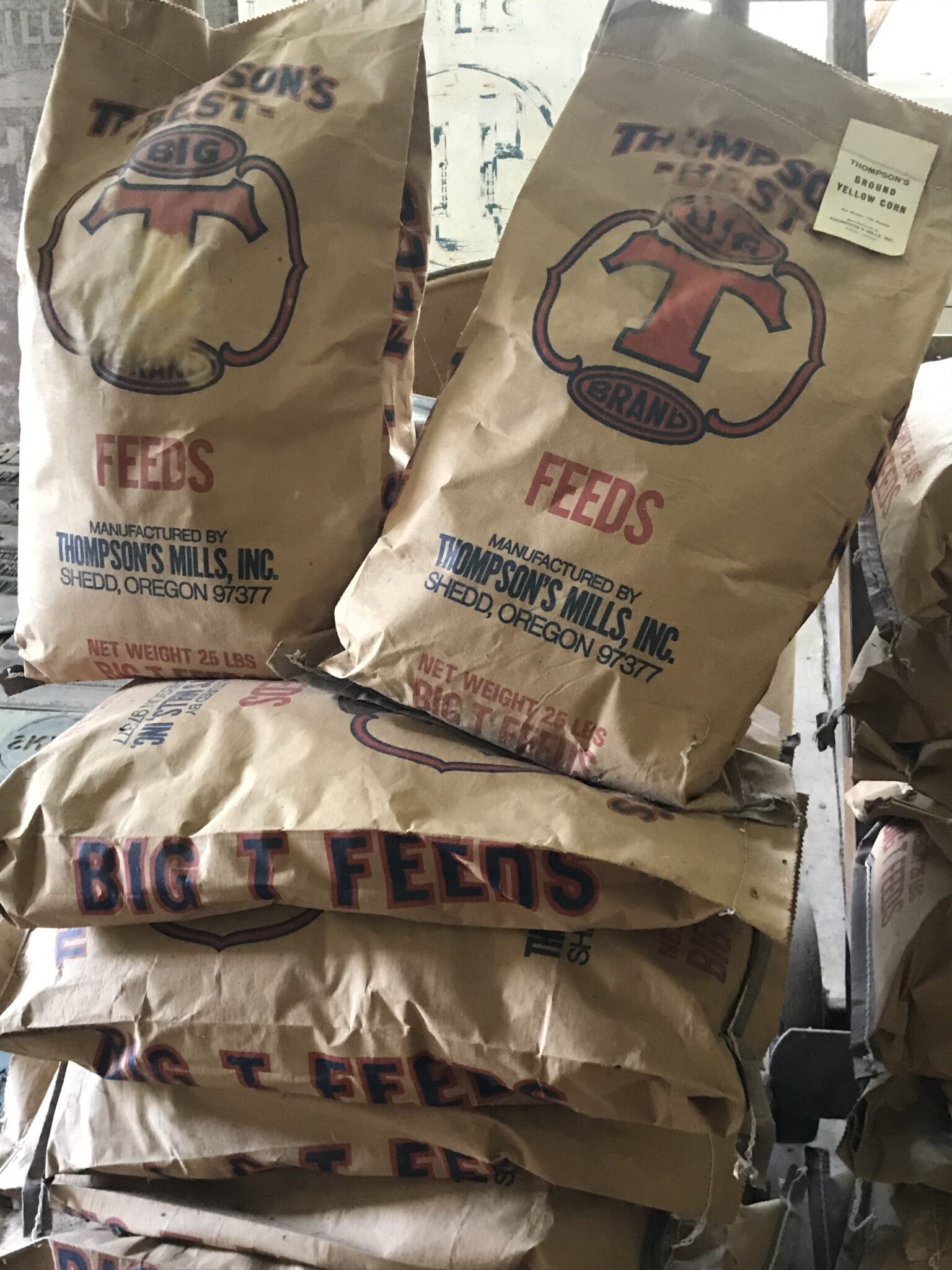
Thompson’s Mill brand of animal feed, sold in paper sacks.
In the 1980’s, the mill diversified and started selling electricity produced from its mill pond and turbines.
Finally, in 2004, the mill closed and sold to Oregon Parks and Recreation Department. After 3 years of remodeling and sourcing artifacts, Thompson’s Mill State Heritage Site opened to the public as a new state park.
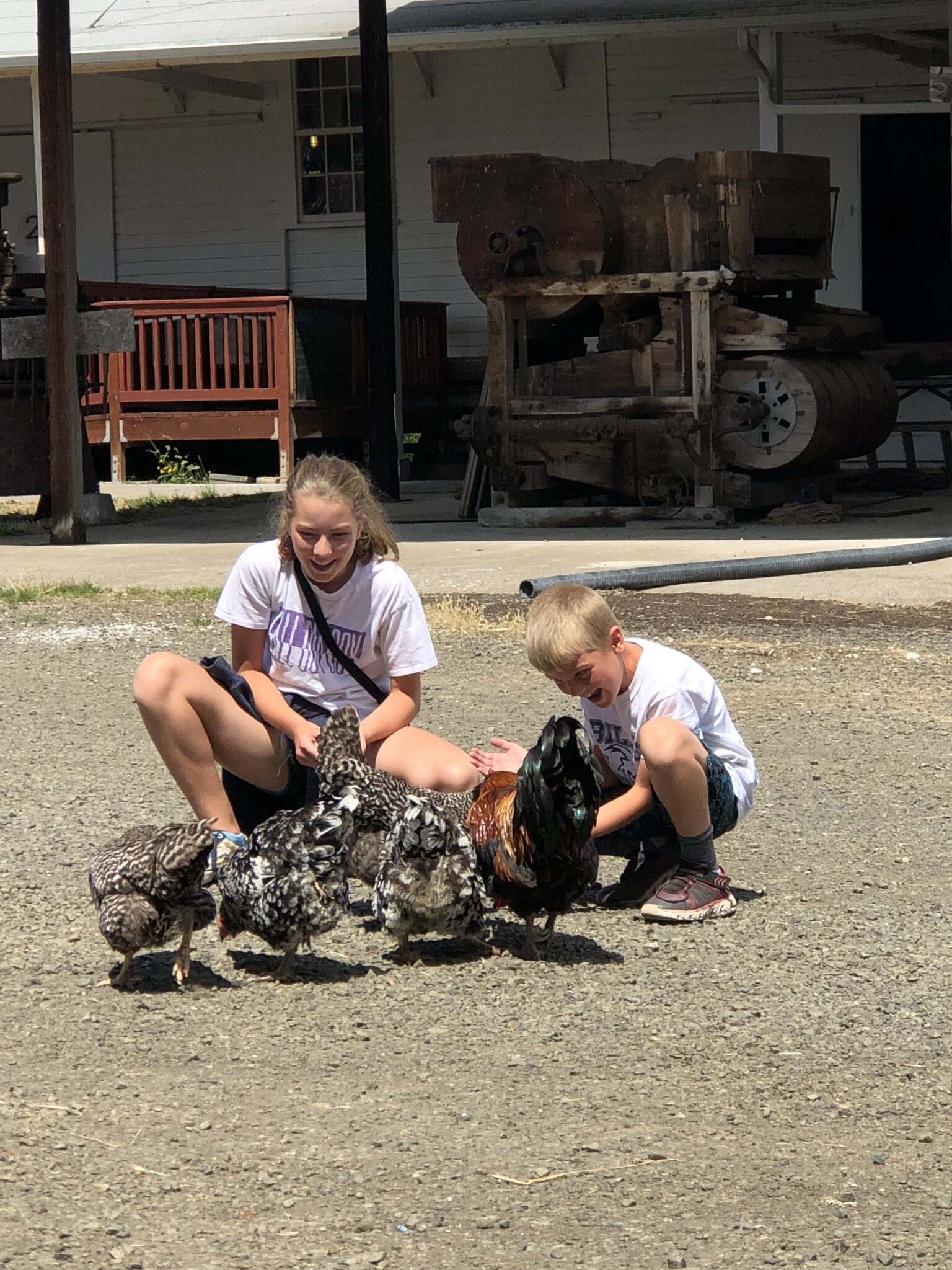
Today, the mill is open to the public for tours. Kids can feed the chickens and explore the equipment showcased around the mill.
Photo Gallery
Upstairs again, the museum volunteers described the workings of how they moved finished flour up and down through the mill. I wandered into the tiny gift shop and a display of home appliances, including an old refrigerator and a wood stove.

Camille takes lovely photos with a unique eye for detail. This is a portion of the stove that is included in the mill’s old kitchen.

Another of Camille’s photos, the pitcher and basin evoke a historical feeling in the kitchen.
The tour was over, and we were free to revisit any of the exhibits inside, except for the basement. My daughter (the amazing photographer) and I went back through to take more photos. Below is a gallery of her photos, which capture the history and essence of the flour mill. Enjoy!
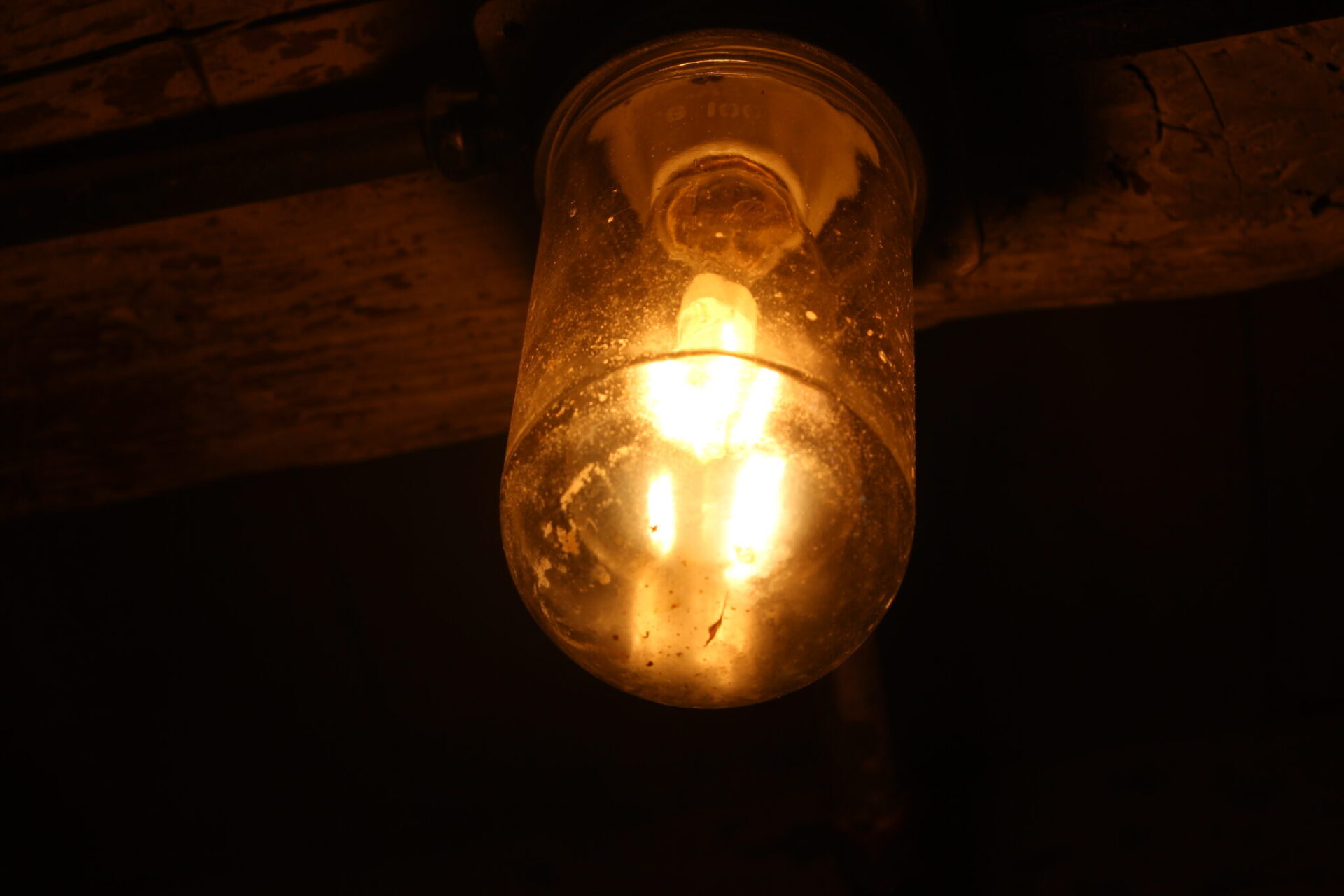
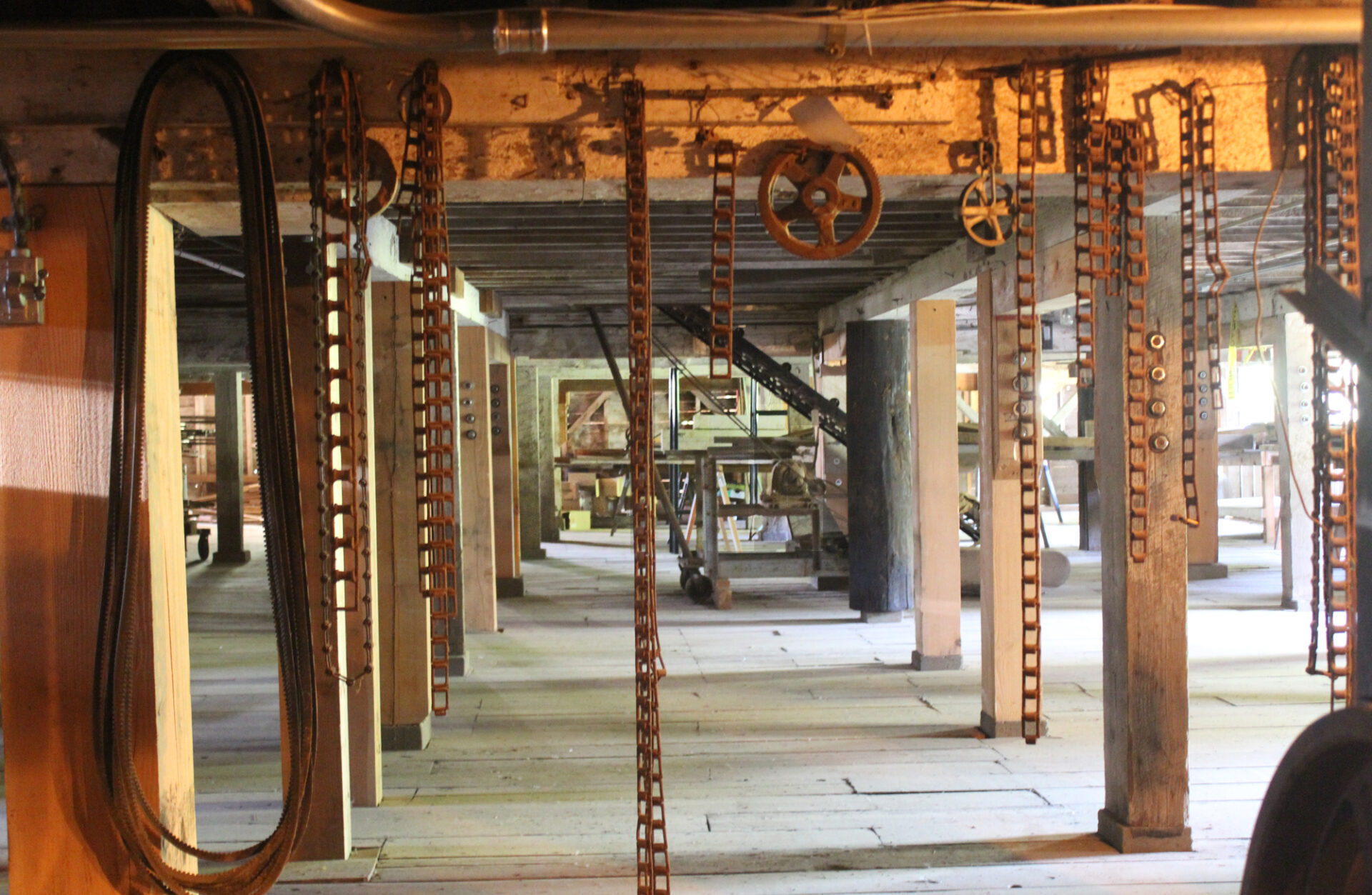
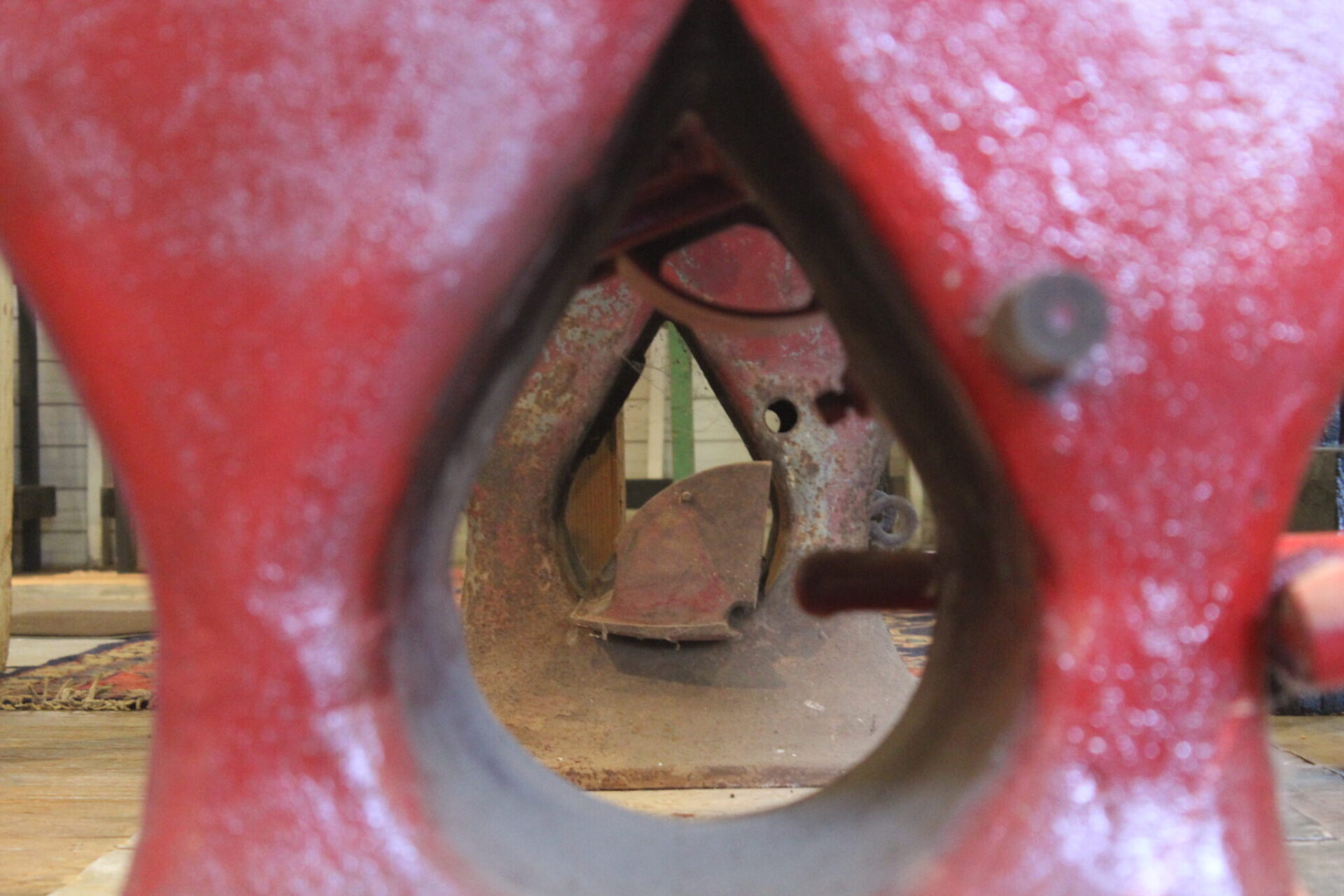


If you go, and we hope that you do…
The park is open daily except Thanksgiving and Christmas day.
Self-guided mill tours daily 9 a.m.-4 p.m.
Guided tours daily at 11 a.m, 1 p.m., and 2 p.m. (These hours differ from what is posted online, but these hours are posted at the mill as of 6/21/2025.)
The mill address is 32655 Boston Mill Drive, Shedd, OR 97377.
Cost: free
Amenities: vault bathrooms, picnic area, lots of parking
Accessibility: the main floor of the museum with all of the exhibits is fully accessible. The basement with the turbine demonstration is not accessible for wheelchairs and the steps to enter are steep and narrow. (But the turbines start machinery that runs on the main floor, so there is still a live demo that is available to those on the main floor.) A manual wheelchair is available for those who need one.

2 comments
Looks like an awesome day!
It’s a *really* neat place!